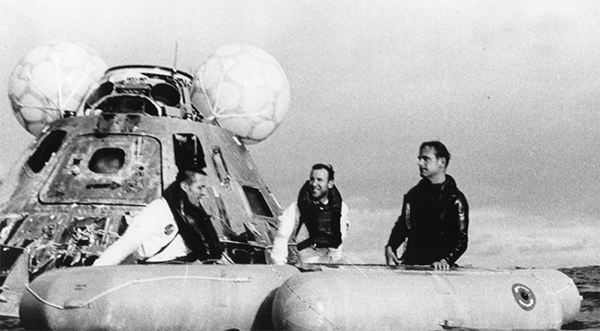When Moon Mission Turned Into Rescue: What Happened to Apollo 13?
By Space Coast Daily // July 27, 2022

What Happened to Apollo 13: Top Things to Know
If you want to know what caused Apollo 13 accident, give this article a read. This incident should be studied for the purpose of getting higher education.
It’s important to understand what happened to Apollo 13 and how astronauts managed their mission, especially if you are interested in becoming an astronaut yourself or want another space-related career.
So, let’s start with the Apollo 13 launch. This mission launched on April 11, 1970, and included the crew of Command Module Pilot Jack Swigert, Lunar Module Pilot Fred Haise, and Command Module Jack Swigert. Apollo 13’s command module was called Odyssey, whereas the lunar module’s name was Aquarius. Going back from Moon to Earth took around 3 days.
How Many Moon Missions Were There?
In July 1969, the famous astronaut Neil Armstrong landed on the Moon, shocking the entire world and making people’s dream about reaching space come true. For the next five years, the USA reached the Moon five more times, finally securing the space leadership of the US against USSR.
However, the Apollo 13 victory was pricey, as the Apollo program from NASA became a failure when it came to scientific gains. American taxpayers have indeed suffered some losses, but the moment was tragic. During ground tests, the Apollo 1 team died in a fire.
Accident & Rescue of Apollo 13 Details
Apollo 13 was launched from the Kennedy Space Center in 1970 on April 11. The lunar landing had to be aborted after the service module’s (SM) oxygen tank had failed after two days. Instead, the crew circled the Moon, returning safely to Earth on April 17.
Apollo 13 accident was caused by an oxygen explosion followed by a tank oxygen rupture in the command module. There was a valve and rupture line damaged in the oxygen tank 1. This led to more oxygen being lost more rapidly. Orbital Today has published a more detailed account of this tech failure, but here we will only focus on what truly matters — astronaut lives.
How Did Apollo 13 Survive Reentry?
As soon as Apollo 13 reached the ocean safely, the spacecraft ventilation system allowed more fresh air to enter the capsule. Astronauts used a VHF beacon for recovery. A sea ship recovered the crew and their capsule.
Today, this mission is an example of space travel dangers and proof of NASA’s innovative minds. Apollo 13 was celebrated on April 11, 2020. Apollo 13 command module was recovered, and now it’s being used for study.

How Was the Apollo 13 Problem Solved?
Apollo 13 astronauts from the testing team decided to solve their problem by testing the heating tank overnight so that liquid oxygen was burning off. But the high voltage ground DC system caused the tank heater to shut off. The temperature went to over 1,000 degrees F.
Apollo 13 was the 7th Apollo program mission with men and the 3rd one carrying astronauts to the Moon’s surface. The crew was sent into space to study a lunar crater, visible from Earth, that was named after the Fra Mauro cartographer.
What Are the Post-Flight Analysis Details?
According to post-flight analysis, Saturn V’s 5th engine failed in the second stage, resulting in low-frequency pressure fluctuations from the combustion chamber, as the chamber pressure dropped, and fuel supply automatics were cut off.
Apollo 13 crew could still communicate with ground stations. On April 13, astronauts reported the first explosion. There were numerous design changes made not only to the service but also to the command module, for further study.
How Did the Astronauts Save the Apollo 13?
Apollo 13 astronauts tried to repair their command module. They have battened down with the hatches, and then they have turned the life support system on. The system showed that the level consumption was at high levels, and the hatch was leaking.
On the other hand, there was a real difference between Odyssey and Aquarius, so Odyssey started to raise its standard level. As soon as this level has been reached, the consumption of oxygen returned to normal levels.
NASA’s Future Plans for Moon Missions
Apollo 13 astronauts were later assigned to another Moon mission. However, this mission was canceled as soon as NASA’s budget was cut. Then, Haise after piloted the Enterprise for test flights. Today, however, NASA is intent on getting back to the Moon to build a more permanent base there, so soon enough, we should see more astronauts on the surface of our natural satellite. Hopefully, 21-century missions will be less dramatic.











